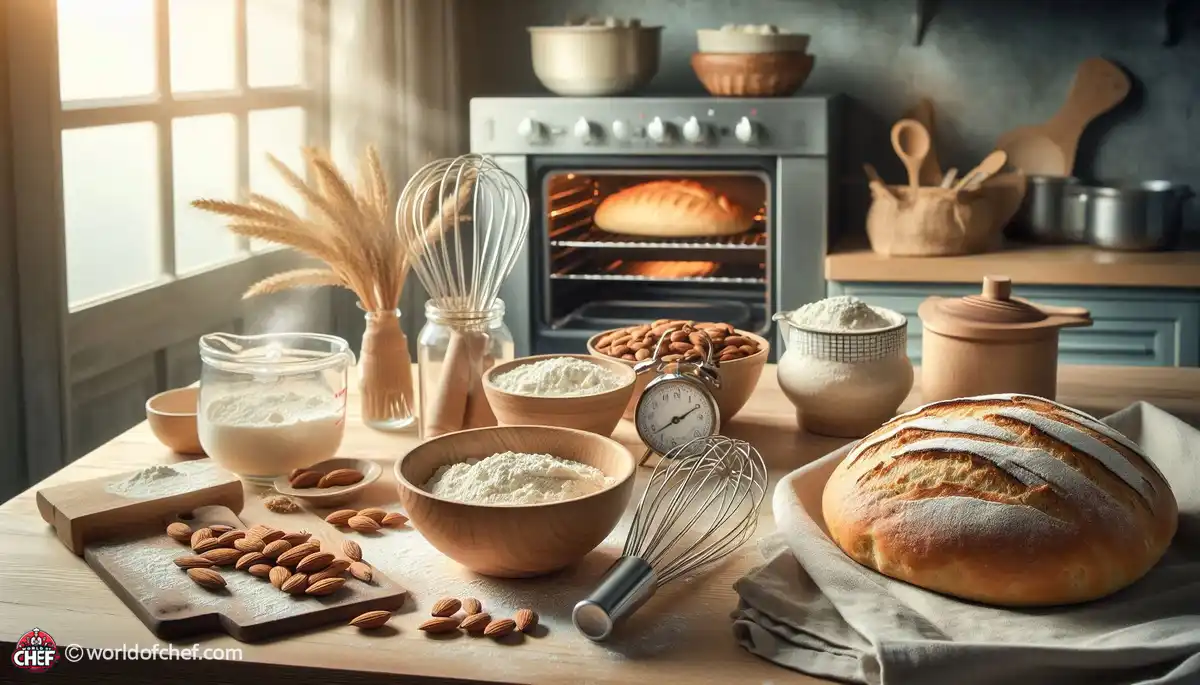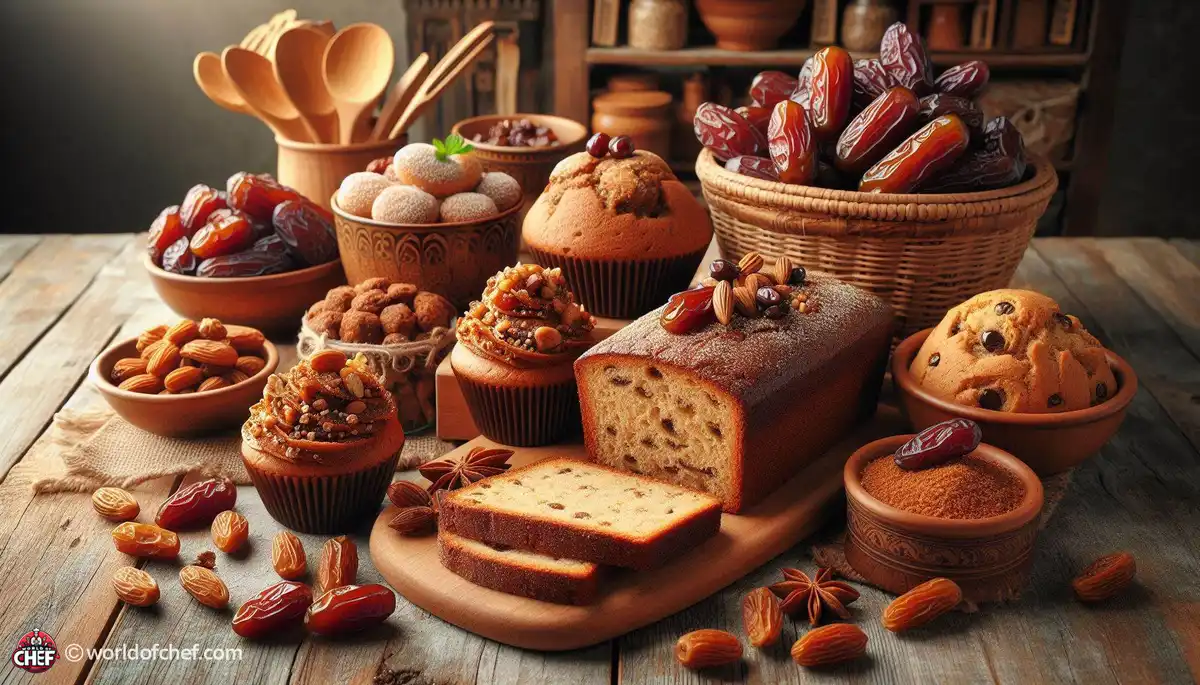
Understanding Oven Hot Spots and How to Bake Around Them
Russell Comeaux - Mar 30, 2025 - 13 min read


It makes all the difference to the culinary creations to choose the proper baking flour. With thousands of types available, it could be confusing to choose the right one for an appropriate recipe. This guide would help simplify the procedure to select flour, with additional tips and tricks that prove useful for you in helping you improve your baking skills. Let us get down to the world of baking flour and discover how you can make the best selection for you.
Understanding the Different Types of Baking Flour All-Purpose Flour: The Versatile Staple All-purpose flour is likely something you already have stored in your pantry. Balancing protein, all-purpose flour performs well in both cookies and bread. Virtually all this type of flour contains a protein between 10% and 12%, which means that the flour won't overbuild in your baked good. All-purpose flour is always a safe bet to fall back on.
When using all-purpose flour, one should always measure. Using too much flour can result in baked goods that are dry and crumbly. To be most accurate, measure the flour using a spoon and level it off using a knife. This is an extremely simple trick, yet one that makes a tremendous difference in the final texture.
Most popular myth: All-purpose flour can be used to substitute all types of flour in any given recipe. This statement is partially true because in most cases, it would work just fine. Nonetheless, not all recipes are able to be completed without a hitch using only the all-purpose flour. When you understand the concept of protein within flour, you will know when it's alright to use the all-purpose and when to search elsewhere for the flour that you need.
Lastly, pay attention to your all-purpose flour. Freshly milled flour makes a lot of difference in taste and texture. If you have the wherewithal, try to buy fresh flour from a local mill, or look for a brand that emphasizes freshness. That's going to make a big difference in your baked goods.
Bread flour is specifically designed for yeast-based recipes. Higher in protein about 12 to 14%, it lends the strength and elasticity required to let bread rise very well. It helps develop gluten: a chewy texture, which makes the bread into something we want all of us to devoured on.
When using bread flour, remember that it absorbs more water than all-purpose flour. You may have to tweak the liquid in your recipe just a bit to get the right consistency. A little experimentation will go a long way in making sure that your dough is well-hydrated.
Bread flour can also be used for pizza crusts and bagels. There is a high protein level that makes them great with chewiness in those uses. If you want your crust to be able to hold toppings without becoming soggy, then bread flour is your friend.
Store your bread flour always fresh, best in an airtight container, in a cool, dark place, so with time, its quality won't degrade, and besides, the flour won't soak some odors from other foods.
Cake flour is a secret ingredient in tender and delicate cakes. It's low in protein, weighing in at about 7-9%, which tends to produce a finer crumb and creates that mouthfeel we love. So, it is particularly valuable for recipes such as chiffon cakes and sponge cakes, where lightness matters.
Sifting the cake flour is important before adding it to your recipe as this adds air to the flour and makes your cakes light. Other bakers combine all-purpose flour with cake flour in a few recipes for added structure and tenderness with strength.
Cake flour will also absorb moisture. Using cake flour in recipes means liquid content will be adjusted more than if all-purpose were used. Checking on how wet or dry your batters are is crucial.
Last, if you're not ready with cake flour, then you can readily make one at home as well by mixing all-purpose flour and cornstarch. You need to deduct two tablespoons from every one cup of all-purpose flour and substitute it with an equal measure of cornstarch. This homemade combination can mimic the characteristics that cake flour has.
Whole wheat flour is the best for people looking to include more nutrients in their baked goods. It is simply the whole wheat kernel used, so the bran and germ are left in the flour, meaning it has a higher fiber content and a nutty flavor compared to other flours, which can be very helpful for your recipes.
One thing you must note in using whole wheat flour is that it tends to absorb a lot more liquid than the all-purpose flour. Therefore, it is necessary that you should increase the proportion of the liquid in the recipe if it calls for all-purpose flour. With this, you will definitely get a moist and savory end product.
Whole wheat flour can be used in a variety of baked goods, such as breads, muffins, and pancakes. Still, because it is slightly denser, many bakers mix whole wheat flour with all-purpose flour to make lighter results still retaining the Health Benefits from whole grains.
Lastly, consider the storage needs of whole wheat flour. It has a relatively short shelf life compared to refined flours because it retains its natural oils in the bran and germ. For best freshness and flavor, store it in the refrigerator or freezer.
These include various kinds of gluten-free flours, all made out of different grains and legumes: almond and rice and chickpea, among others. Each flavor and texture profile is distinctly different from others, thereby making baked goods especially good for those people with this sort of dietary restriction.
Use a blend of flours specifically formulated for baking when working with gluten-free flours. A blend often contains a combination of several different gluten-free flours and starches, which will mimic the properties of wheat flour, allowing for a better rise and texture in your baked goods.
Sometimes, when using gluten-free flour, you have to add binding agents like xanthan gum or psyllium husk. These provide the structure, as if it were gluten, for a more cohesive dough or batter.
It behaves differently from any other, and you will have to do some experimenting with your recipes and techniques. You would keep a journal of success and failures, and after some time, you find some of the best mixes for your favorite recipes.
People doing low-carb or paleo diets love almond flour. This is made up of ground almonds that leave a very delicious nutty flavor on baked goods, such as cookies, cakes, and pancakes. Since it has a moist quality, no one can get enough of it.
It does contain gluten, which means using only almond flour in most of the recipes is relatively impossible compared to regular flours. However, when taken in combination with coconut flour or all-purpose flour to create a better structure without losing the goodness of this flour, it may also be used.
Almond flour tends to brown much more easily than wheat flour, so be on the lookout for your baked goods not to burn. You should also know that a lower oven temperature can prevent uneven browning.
For last, store almond flour in the fridge or freezer to maintain its freshness. Like whole wheat flour, almond flour contains natural oils that can go rancid if not kept well. Keeping cool will extend its shelf life and keep its flavor.
Oat flour is an excellent choice since ground oats present a rather mild, lightly sweet taste in baked items. The flour is full of dietary fiber and nutrient goodness and thus is the best healthy ingredient to add to your recipe book. Pancakes, muffins, and cookies are some of the favorite dishes that can be best paired with oat flour for that little uniqueness.
One of the benefits of oat flour is that it produces a very tender crumb. That being said, it lacks gluten, so you'd have to add some other binding agents, such as xanthan gum. Mixing oat flour with others can also help improve overall structure in baked goods.
One needs to consider that oat flour sucks more liquids than all-purpose flour and, therefore, adjust most of your recipes for this. You can add in small amounts and mix gradually until the texture turns right.
To make oat flour at home, simply blend rolled oats in a blender or food processor until finely ground. This is an easy way to incorporate fresh oat flour into your baking without having to purchase it from the store.
When choosing your flour, read your flour labels carefully. You will then pick several brands varying in their protein content, freshness, and general quality. Make sure to select flour with its protein content labeled because it would guide you in the selection of the right flour for a given recipe.
Pay attention to ingredients. Some flours are enriched with vitamins and minerals, while others are organic or non-GMO. Having an understanding of the differences will allow you to make informed choices that align with your Dietary Preferences and health objectives.
Another good tip is checking on the packaging date. Freshly milled flour does indeed produce great results when baked, so you use fresh bags of flour. What an enormous difference fresher, probably more flavorfully milled will have against stale millings.
Don't be afraid to ask questions at your local store. Many specialty stores have very knowledgeable staff who can help you find the best flour for your needs. Their expertise can save you time and help you discover new flour options you may not have considered.
Creativity and precision go hand in hand when it comes to baking. You can experiment with different flours and blends to find those that best work for you. Testing out various flours may result in lovely surprises with flavors and textures.
Try the same recipe, but just change small aspects of the flour you're using. For example, substitute all-purpose flour for whole wheat or a gluten-free mix. Take notes on what does and doesn't work.
You can also adjust the liquid, sugar, and other ingredients in your recipes to accommodate different types of flour. As you gain experience, you will become more comfortable with these adjustments, leading to even better baking results.
Finally, remember that baking is a journey. Each attempt teaches you something new, and with practice, you will become more adept at selecting and using various flours to create delicious baked goods.
The way your flour is stored has implications for freshness as well as its final performance in your baked goods. Keep your flours in airtight containers to keep moisture at bay and prevent damage to the quality of your flours. For example, glass jars or plastic containers with tight seals can be used.
Store whole grain and nut flours in the refrigerator or freezer to have them on hand for a longer period. This will keep them fresh, prevent rancidity, and ensure they are available whenever needed. Just be sure to thaw them to room temperature before using them in your recipes.
Label your containers with the type of flour and date of purchase. This simple practice helps you keep track of freshness and ensures that you use older flours first. Keeping your baking supplies organized will make your baking experience more enjoyable.
Lastly, make sure your flour storage space is cool and dark. Too much heat and light degrade the quality of flour over a period of time. A pantry or cupboard usually makes a perfect place for the safe storage of flours.
Life may not always be that simple when it comes to the issue of flour. When understood and broken down to show all types of flour there are and what properties belong to which, decision making for improving your baked creations will come about quite clearly.
As you experiment and gain experience, you'll come to know the right flours for your favorite recipes. Don't be afraid to try new ones and adjust your methods according to what works best for you. Flour selection isn't just about following a recipe; it's finding out the fun of baking and creating wonderful treats for your friends and family. Happy baking!

Russell Comeaux - Mar 30, 2025 - 13 min read

Alexis Larose - Mar 25, 2025 - 15 min read

Hailey Morrill - Mar 21, 2025 - 18 min read

Bobby McKelvey - Mar 18, 2025 - 12 min read